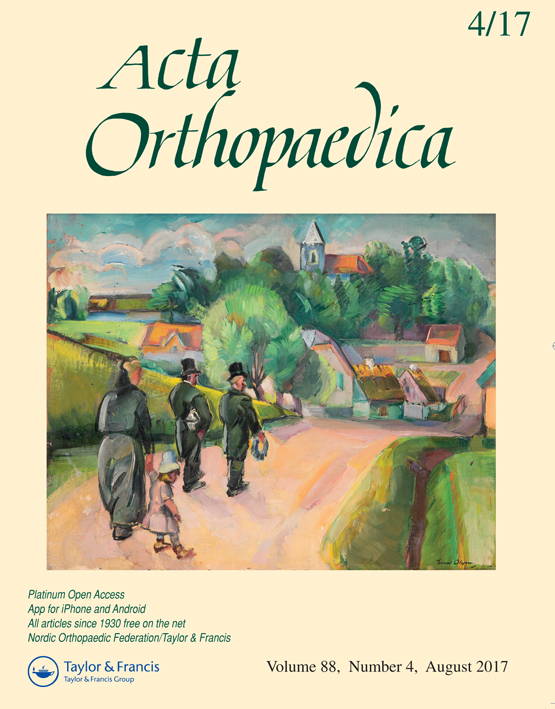The risk of non-union per fracture: current myths and revised figures from a population of over 4 million adults
DOI:
https://doi.org/10.1080/17453674.2017.1321351Abstract
Background and purpose — Fracture non-union remains a major clinical problem, yet there are no data available regarding the overall risk of fractures progressing to non-union in a large population. We investigated the rate of non-union per fracture in a large adult population. Methods — National data collected prospectively over a 5-year period and involving just under 5,000 non-unions were analyzed and compared to the incidence of fracture in the same period. Results and interpretation — The overall risk of non-union per fracture was 1.9%, which is considerably less than previously believed. However, for certain fractures in specific age groups the risk of non-union rose to 9%. As expected, these higher rates of non-union were observed with tibial and clavicular fractures, but—less expectedly—it was in the young and middle-aged adults rather than in the older and elderly population. This study is the first to examine fracture non-union rates in a large population according to age and site, and provides more robust (and lower) estimates of non-union risk than those that are frequently quoted.Downloads
Download data is not yet available.
Downloads
Additional Files
Published
2017-07-04
How to Cite
Mills, L. A., Aitken, S. A., & Simpson, A. H. R. W. (2017). The risk of non-union per fracture: current myths and revised figures from a population of over 4 million adults. Acta Orthopaedica, 88(4), 434–439. https://doi.org/10.1080/17453674.2017.1321351
Issue
Section
Articles
License
Copyright (c) 2017 Leanora A Mills, Stuart A Aitken, A Hamish R W Simpson

This work is licensed under a Creative Commons Attribution-NonCommercial 3.0 Unported License.
Acta Orthopaedica (Scandinavica) content is available freely online as from volume 1, 1930. The journal owner owns the copyright for all material published until volume 80, 2009. As of June 2009, the journal has however been published fully Open Access, meaning the authors retain copyright to their work. As of June 2009, articles have been published under CC-BY-NC or CC-BY licenses, unless otherwise specified.







